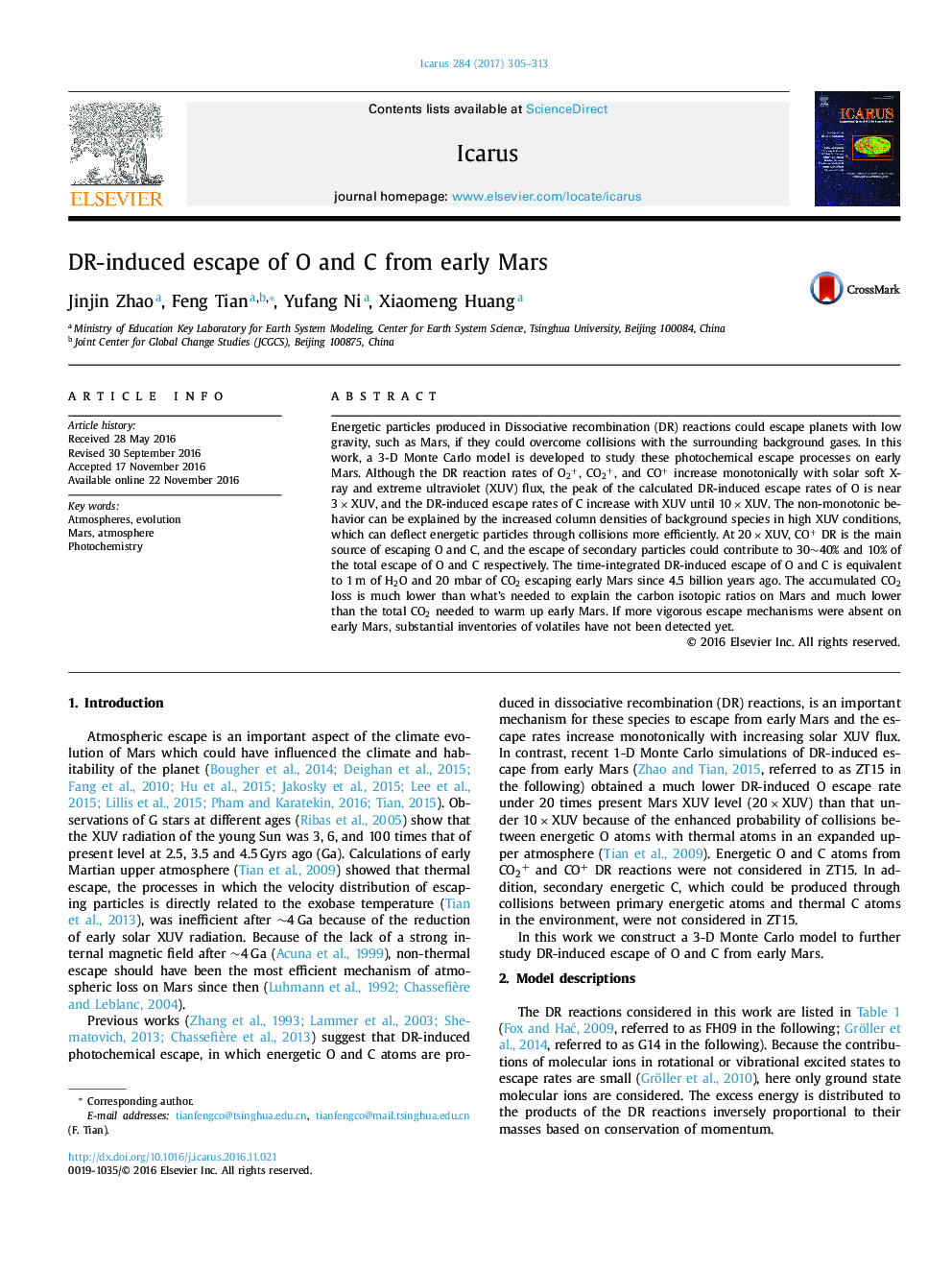| کد مقاله | کد نشریه | سال انتشار | مقاله انگلیسی | نسخه تمام متن |
|---|---|---|---|---|
| 5487144 | 1523507 | 2017 | 9 صفحه PDF | دانلود رایگان |
عنوان انگلیسی مقاله ISI
DR-induced escape of O and C from early Mars
دانلود مقاله + سفارش ترجمه
دانلود مقاله ISI انگلیسی
رایگان برای ایرانیان
کلمات کلیدی
موضوعات مرتبط
مهندسی و علوم پایه
علوم زمین و سیارات
علوم فضا و نجوم
پیش نمایش صفحه اول مقاله

چکیده انگلیسی
Energetic particles produced in Dissociative recombination (DR) reactions could escape planets with low gravity, such as Mars, if they could overcome collisions with the surrounding background gases. In this work, a 3-D Monte Carlo model is developed to study these photochemical escape processes on early Mars. Although the DR reaction rates of O2+, CO2+, and CO+ increase monotonically with solar soft X-ray and extreme ultraviolet (XUV) flux, the peak of the calculated DR-induced escape rates of O is near 3âàXUV, and the DR-induced escape rates of C increase with XUV until 10âàXUV. The non-monotonic behavior can be explained by the increased column densities of background species in high XUV conditions, which can deflect energetic particles through collisions more efficiently. At 20âàXUV, CO+ DR is the main source of escaping O and C, and the escape of secondary particles could contribute to 30â¼40% and 10% of the total escape of O and C respectively. The time-integrated DR-induced escape of O and C is equivalent to 1 m of H2O and 20 mbar of CO2 escaping early Mars since 4.5 billion years ago. The accumulated CO2 loss is much lower than what's needed to explain the carbon isotopic ratios on Mars and much lower than the total CO2 needed to warm up early Mars. If more vigorous escape mechanisms were absent on early Mars, substantial inventories of volatiles have not been detected yet.
ناشر
Database: Elsevier - ScienceDirect (ساینس دایرکت)
Journal: Icarus - Volume 284, 1 March 2017, Pages 305-313
Journal: Icarus - Volume 284, 1 March 2017, Pages 305-313
نویسندگان
Zhao Jinjin, Tian Feng, Ni Yufang, Huang Xiaomeng,